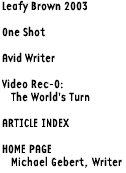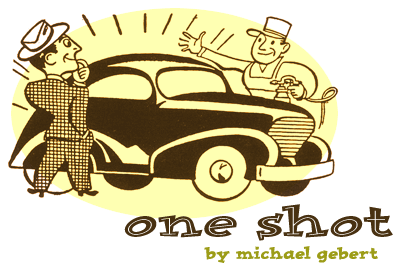


For two spellbinding minutes, in a single take (you can almost feel the Steadicam operator’s panic as he races to keep up), the pieces of an Accord bounce and ping off each other in a chain reaction, some parts of which are merely ingenious (carefully weighted tires roll upward to nudge the next in line), others of which actually make use of the features of the car (water squirts to show off the fact that the wipers start automatically when they sense rain). As these inanimate car parts come to life in amazing and beguiling ways, not a word is spoken until the very end, when Garrison Keillor purrs, “Isn’t it nice when things just work?”
Of course, the agency couldn’t help telling the world that it actually didn’t work—until the 605th take. But it takes nothing away from this beautiful industrial ballet (or the Honda Accord, for that matter) to know that it took so many tries to get such delicately precise things to all happen perfectly in the same continuous shot. On the contrary, the filmmakers’ dedication rubs off on the car company that created the parts that perform so precisely.
What they didn’t tell the press about, however, was the other chain of events that also had to happen perfectly in order for this spot to ever reach the public.
A writer and an art director set the idea in motion, narrowly escaping concerns about whether an idea of such complex logistics (and yet such minimalist message) was even sellable. It then bumped into a creative director, who had enough vision to see that it was the kind of idea that needed a champion if it wasn’t going to lose its momentum. He or she tipped it to the account team, who could have easily stopped it cold with the weight of the mandatories listed in the brief—shots of the car making S-curves in a forest, narration calling out features like the automatic windshield wipers, a cast of yuppies so the target audience would have somebody to identify with. But somehow they rolled it uphill past all that to the client, who managed to leap past their discomfort at having their pretty car reduced to the sum of its parts on screen, and kicked it to the production company, who barreled right over the temptation to use digital trickery and spent days and nights doing it, again and again and again, for real.
However, while the crew had 605 chances to capture it all, the idea had to make it the very first time, on the first take, past all those obstacles—any one of which could have doomed it.
Isn’t it nice when things just work?